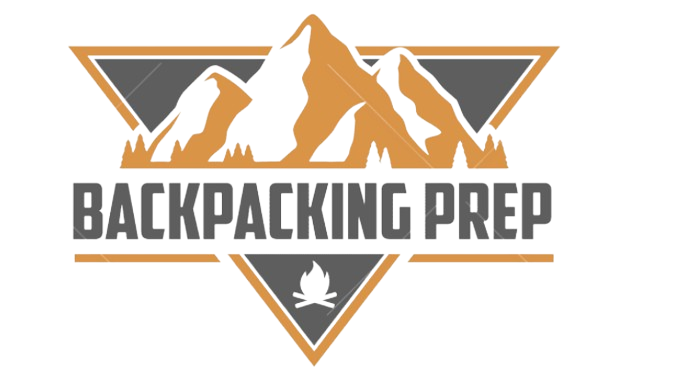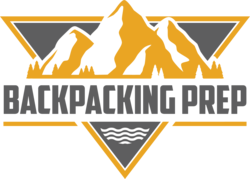Hiking and backpacking in Denali National Park, Alaska, is like stepping into a vast world of wild beauty. This park covers 6 million acres and offers 87 unique backcountry areas for adventurers to explore.
It’s a place where you can come face-to-face with moose, grizzly bears, and witness rivers that can change quickly. For those looking to venture deep into the wilderness on foot, Denali challenges you with every step.
The importance of this park goes beyond its size; it’s an untouched piece of nature where hikers must use their skills to navigate without clear trails. Imagine crossing rivers that might be calm one day but raging the next or preparing for weather that swings from hot to freezing within hours.
These conditions make Denali not just another hiking spot but a true test for outdoor lovers.
People flock there because each trail or off-trail route promises something amazing. From the epic 9.3-mile Triple Lakes trail to the challenging climb up Thorofare Ridge Trail at only 0.8 miles long – there’s something for everyone willing to carry their home on their backs.
But before setting out, there are things every backpacker needs: permits grabbed up to one day before your trip begins, gear tough enough for sudden cold snaps down to 20 degrees Fahrenheit or lower and knowledge about how close you should really get to a moose (hint: not very).
And don’t forget about bus tickets – these rides help backpackers start their journeys further inside this awe-inspiring land.
So what does it take to have an exciting time in America’s tallest mountain’s backyard? Solid boots on your feet, bear-resistant containers for food storage during summer trips, essential training—like learning how bears think—and smart planning will set you up for success.
Ready your pack and tie your boots tight–there’s much more ahead in this ultimate guide!
Key Takeaways
- Denali National Park uses a Unit System for backpacking, which limits the number of hikers per area. Get permits up to one day before your hike.
- Proper gear is important. Pack warm clothes, rain gear, sturdy boots, bear-resistant food containers, and navigation tools like maps and compasses.
- Learn skills like map reading, compass use, river crossing safety, and bear awareness before starting your hike in Denali’s backcountry.
- There are shuttle buses that can take you deep into the park. Book these early as they help with longer hikes.
- Always tell someone your hiking plan and when you will return to stay safe while exploring off-trail routes in Denali National Park.
Understanding Denali National Park

Denali National Park, a marvel of Alaska’s wild frontier, presents adventurers with over six million acres of untamed wilderness. This expansive domain operates on a unique Unit System—fostering an immersive backcountry experience that requires understanding and respect for its vast natural landscapes and the freedom it provides.
Denali’s Unit System
In Denali National Park, the wilderness is split into 87 backcountry units. This system helps protect nature and makes sure not too many hikers are in one place at a time. Each unit has just a few permits, so everyone can enjoy the wild without big crowds.
Getting to know these backcountry units is key for your adventure. When you plan where to hike or camp, you’ll pick from these areas. Keep in mind that no two units are the same. Some have forests and rivers while others have high mountains and glaciers.
With a good map of the units, you’ll find the perfect spot for your trip!
Backpacking Denali: A True Wilderness Experience
Backpacking in Denali National Park is not just a walk on the trail—it’s an adventure into the heart of wild Alaska. With 6 million acres of rugged land, you get to explore vast spaces where trails don’t dictate your path.
Denali is all about carving your own route through untamed terrain. Trees give way to open tundra and sharp ridges under the wide-open sky. You carry everything you need on your back, from a sleeping bag to food in bear-resistant containers.
The park urges hikers to be ready for anything and count on themselves out there. Weather can change quickly, turning blue skies grey with snow or rain. Rivers swell and paths vanish without warning—each step is both a test and a treat as you navigate using topographic maps and compass skills.
But every challenge in this pure wilderness adds to the thrill: spying Dall sheep on distant slopes or watching golden eagles swoop overhead while camping under the stars at night—you create moments that last a lifetime here in Denali’s backcountry units.
Planning Your Trip

Venturing into the heart of Alaska’s wild majesty requires thoughtful preparation—setting the stage for a Denali expedition is as crucial as the journey itself. From securing elusive backcountry permits to syncing with park shuttle schedules, every detail paves the way to your ultimate Alaskan adventure.
Pre-Trip Considerations
Getting ready for a backpacking adventure in Denali National Park takes careful planning. You need to think about permits, gear, and skills for a safe and fun trip.
- Check Your Calendar: Decide on the dates for your trip. Think about how long you want to stay and what the weather might be like.
- Get Fit: Start exercising to get in shape. Hiking in Denali can be tough, so being strong helps a lot.
- Learn Skills: Know how to read a map and use a compass. Practice river crossings safely.
- Bear Safety: Understand how to store food away from bears. Learn about using bear spray just in case.
- Choose Your Unit: Look at the backcountry unit map of Denali Park. Pick where you’d like to hike based on what you want to see and do.
- Pack Right: Make a list of clothes, tents, food, and other important things you’ll need. Be sure items are right for cold and wet weather.
- Reserve Your Spot: You have to get your backcountry permit in person at the park up to one day before your hike starts.
- Book the Bus: If you’re going deep into the park, get tickets for the camper bus ahead of time.
- Plan Meals: Pack food that won’t spoil and is easy to cook. Store it in bear-resistant containers.
- Tell Someone: Let friends or family know where you will be hiking and when you plan to return.
How to Obtain a Denali Backcountry Permit
Getting a backcountry permit in Denali National Park is an important step in planning your adventure. Follow these steps to make sure you can hike and camp in this wild place:
Go to the Backcountry Information Center:
- Visit the center at the park entrance when you arrive.
- It’s open each day during summer.
Arrive early:
- Permits are first come, first serve.
- Plan to get there before the center opens.
Talk to a ranger:
- A park ranger will help you pick a unit to explore.
- They know all about Denali’s special rules and wildlife.
Choose your unit:
- Look at maps and read about different areas of the park.
- Decide where you want to hike and camp.
Fill out paperwork:
- The ranger will give you forms to complete.
- Provide details like your route and number of nights camping.
No cost for permits:
- Getting a permit is free!
- You just need time and patience.
Get there one day ahead:
- You can only get your permit up to 24 hours before starting your trip.
- This gives you time for more planning if needed.
Go through orientation:
- Attend a class on how to stay safe in bear country.
- Learn what gear is best for crossing rivers safely.
Backcountry Orientation at Denali National Park
Once you’ve got your backcountry permit, the next step is to attend a backcountry orientation at Denali National Park. This is a must-do before you can start your adventure. Here’s what it involves:
- You will meet with park rangers who know Denali like the back of their hand.
- Rangers explain the rules for camping and hiking to keep Denali safe and clean.
- They show you how to use bear – resistant food containers, which are required in the summer.
- You learn about the different weather conditions that can happen all in one day.
- The orientation covers how to handle meeting moose or grizzly bears on the trail.
- Maps are provided, and rangers teach you how to read them correctly.
- They’ll guide you through using a compass for navigation in the vast wilderness of Denali.
- You get tips on how to cross rivers safely without getting hurt or swept away.
- Rangers also share advice on where to find drinking water and how to make it safe to drink.
- They’ll answer all your questions about hiking and camping in this beautiful but challenging park.
Denali National Park Shuttle Buses
You’ll need to catch a shuttle bus to explore Denali’s vast wilderness. These buses let you venture deep into the park, beyond what your own car can reach. Grab a camper bus ticket if your journey goes over 15 miles in.
It’s best to book these early! They give you the freedom to hop off at different spots and hike or camp.
Tickets for Denali Park Road shuttles vary depending on how far you go. You pay once, and then you’re free to get on and off all day. Keep an eye out as you ride; wildlife sightings from the bus are common, which makes every trip exciting! Just make sure your hiking gear is ready for quick stops if you spot an ideal trailhead or lookout point along the way.
The Best Trails in Denali
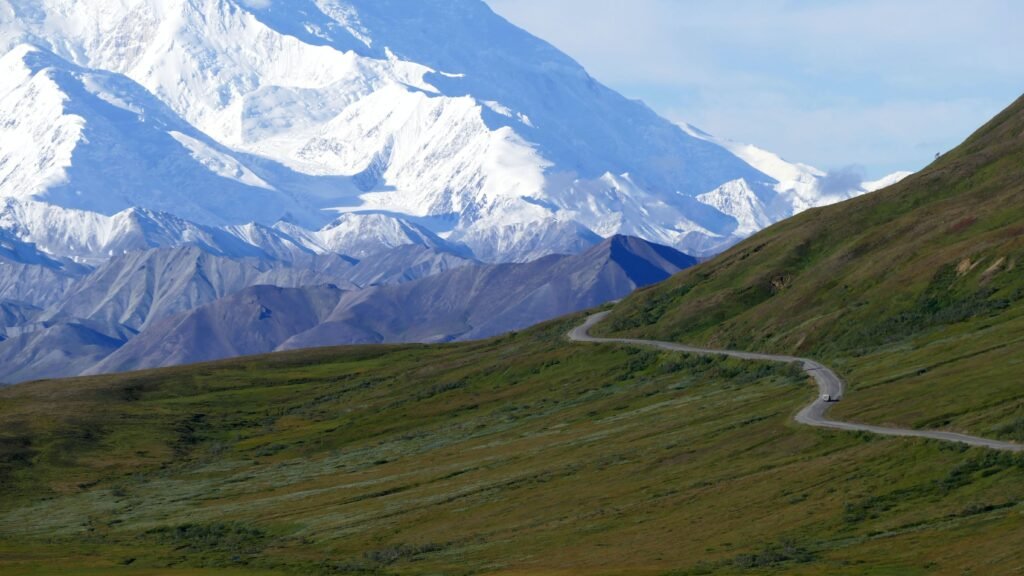
Delve into Denali’s dramatic landscapes by exploring its premier trails, each offering unique vistas and challenges that beckon adventurers to discover more of this raw Alaskan wilderness.
Triple Lakes – 9.3 miles
Triple Lakes is a 9.3-mile trail in the heart of Denali National Park, where hikers find themselves surrounded by Alaska’s wild beauty. This path takes you through varied scenery, including lush forests and three sparkling lakes, making it perfect for those who love lakeside views mixed with forest trails.
The trek can be challenging because of the rough terrain but reaching each lake feels like an accomplishment, offering spectacular spots to rest and soak in nature.
Expect to spend a whole day on this adventure as it’s not just a quick walk in the park. You should pack plenty of water, snacks, and maybe even a bear canister to keep your food safe from curious wildlife.
After exploring Triple Lakes, get ready for another beautiful hike – next up is The Savage Alpine Trail!
The Savage Alpine Trail – 4 miles
After exploring Triple Lakes, you might be excited to tackle The Savage Alpine Trail next. This trail is 4 miles long and offers a fantastic look at Denali National Park’s varied landscapes.
Hikers can start from the Savage River area or the Mountain Vista Rest Area – each end has its own unique views to enjoy.
The path climbs up high with some steep sections, so get ready for an exciting hike! You’ll see beautiful flowers, maybe some wildlife like marmots and ptarmigans, and if you’re lucky, even moose.
From the top of the trail, you’ll have a stunning view that will take your breath away – it’s one of the best ways to see what Denali is all about without taking on a too-long day hike.
Make sure to pack water and wear good shoes; this adventure needs both!
The Mount Healy Overlook Trail – 4.5 miles round trip
Moving through Denali’s rugged landscape, the Mount Healy Overlook Trail offers a perfect mix for those who like their hikes with rewarding views. This 4.5-mile journey treats hikers to a scenic path that climbs above the tree line.
It’s a moderate trek, which means you don’t need to be an expert climber to enjoy it.
This trail begins near the park entrance and winds up through forest and alpine tundra. As you hike higher, look around at the river valley below—it’s like watching nature’s own masterpiece unfold before your eyes! Come prepared with sturdy shoes and some water; when you reach the top, those wide stretches of untouched wilderness will make every step worth it.
The Thorofare Ridge Trail – 0.8 miles
The Thorofare Ridge Trail is for hikers who love a good challenge. It’s just 0.8 miles long, but don’t let that short distance fool you – this trail is tough! You’ll need strong legs and sharp eyes to find your way, as there are no clear paths to follow.
Hikers get to test their skills while taking in some seriously wild Alaskan beauty.
If you tackle the Thorofare Ridge Trail, you’re in for a real adventure. This hike isn’t like walking on established trails; it’s rugged and demands respect. But those who make the journey earn bragging rights and memories of Denali’s untamed wilderness that will last a lifetime!
The Sugarloaf Mountain Trail – 4.3 miles
Lace up your boots for the Sugarloaf Mountain Trail, a 4.3-mile journey through Denali’s heart. It’s one of the park’s gems where you’ll embrace a wild backcountry hike with no set paths guiding your way.
Expect steep climbs and rewarding views that make your heart race and your camera work overtime.
You’ll need sharp skills like compass navigation to find your way, but the sense of adventure is worth it. As you conquer this trail, imagine what lies beyond – endless skies above and nature untamed around every corner.
Next up: exploring off-trail day hikes and backpacking routes in Denali National Park!
Off-Trail Day Hikes and Backpacking Routes
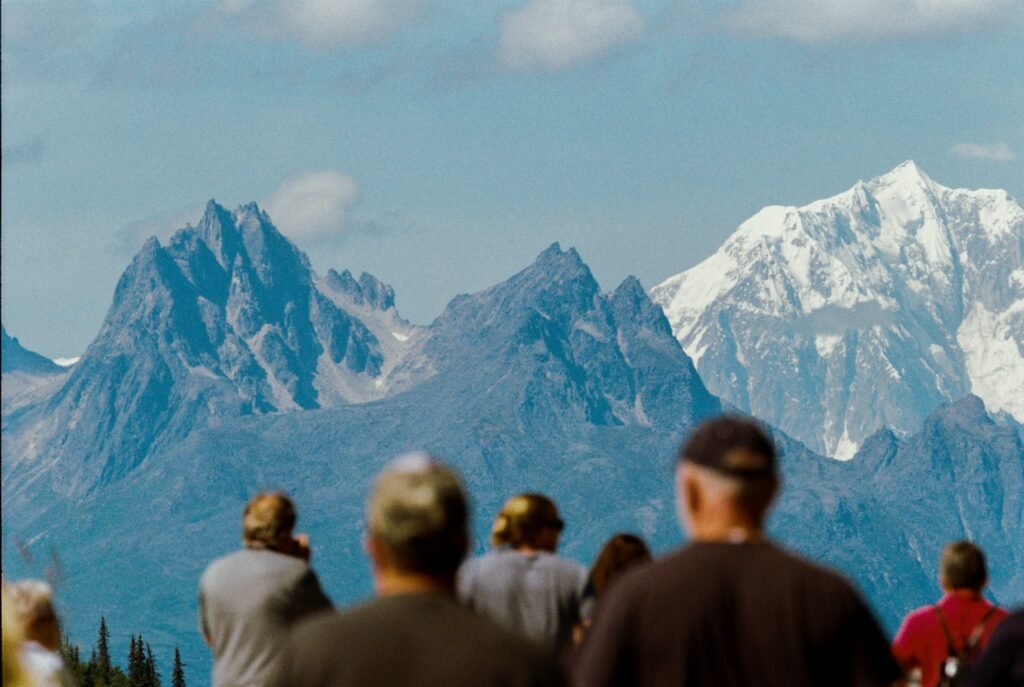
Exploring beyond the beaten paths of Denali, adventurous souls can embrace the raw Alaskan wilderness where established trails give way to unmarked expanses and untold stories whisper through the valleys — a realm awaiting your discovery for an off-trail journey like no other; continue reading to chart your course into these hidden landscapes.
Choosing a Backcountry Hike
Denali National Park is a hiker’s paradise with few trails and endless wild landscapes. Picking the right backcountry hike means preparing to navigate without paths using maps and a compass.
- Look at the map: Start by studying Denali’s units and topographical maps. Find areas that match your comfort with hiking off-trail.
- Think about distance: Decide how far you want to go each day. Remember, hiking without trails can be slow.
- Consider your skills: Be honest about your map reading and compass skills. You’ll need them out there.
- Get updated info: Check for recent trail reports or talk to rangers. They know the current conditions.
- Choose your adventure: Do you want mountains, valleys, rivers? Pick what excites you most.
- Plan for safety: Make sure you have gear for cold weather, rain, and river crossings.
- Bear thoughts: Learn about where grizzlies and black bears live in the park. This will help you stay safe.
- Leave no trace: Be ready to camp without leaving any sign that you were there. Bring a bear-resistant food container too.
- Share plans: Always tell someone your route and when you plan to return.
- Be flexible: Weather changes fast in Denali. Have backup plans in case you need them.
Suggested Backpacking Routes
Picking a backpacking route in Denali can seem tough. But here are some great options that take you through the park’s best spots.
- Base-Camp Hiking: This is perfect for first-timers or those wanting to explore one area deeply. You can set up your tent and trek around without moving camp.
- *Unit 9, Toklat River: * A popular spot for its wide river valleys and animal sightings.
- *Unit 12, Sanctuary River: * Great for views of Mount McKinley and chances to see brown bears.
- Unit Loops: These trips let you hike from one unit to another, seeing different landscapes.
- *Units 13 to 15 Loop: * Start at the Teklanika River, pass through Igloo Canyon, and end at the Sable Pass for varied terrains.
- *Units 21 and 22 Loop: * Trek through high alpine ridges and down into broad river valleys, all with stunning views.
- Busing Between Units: For more of Denali, catch buses between units. It adds an extra cost but lets you cover more ground.
- *East Fork to Eielson Visitor Center: * Start in Unit 11, hike towards Eielson Visitor Center in Unit 12, then bus back or keep hiking.
- Off-Trail Adventures: If trail shoes are ready for a challenge, pick an off-trail route. Remember that this means bushwhacking and map skills!
- *Divide Mountain: * Head off-trail in Unit 31 to climb Divide Mountain. Watch out for moose as you pass through thick brush!
Essential Backpacking Gear List
Whether you’re a seasoned trekker or embarking on your first wilderness journey in Denali, having the right gear is critical—discover the essentials that will ensure your adventure is both safe and memorable.
Footwear, Clothes, and Personal Items
Picking the right gear is key to enjoying your hikes in Denali National Park. Comfort and safety come first, especially with Alaska’s tricky weather.
- Sturdy Hiking Boots: Choose waterproof and broken-in boots that support your ankles. Wet feet can quickly ruin a trip.
- Light, Quick-dry Clothing: Dress in layers that you can easily add or take off. Your bottom layer should keep sweat away from your skin.
- Warm Jacket: Even in summer, you might need a jacket. Pick one that’s warm but not too heavy.
- Rain Gear: Good rainwear keeps you dry without making you sweat. Gore-Tex jackets work well here.
- Gloves and Hat: Bring these for cold mornings and evenings. A sun hat is also smart for sunny days.
- Bear Resistant Food Container: Required by law in the summer to keep bears away from your food.
- Compression Sack for Clothes: This saves space and keeps clothes dry.
- Sunglasses & Sunscreen: The Alaskan sun can be strong, so protect your eyes and skin.
- Bug Spray: Mosquitoes can be fierce in Denali; don’t let them bug you!
- Extra Socks: Keep a few pairs of warm, moisture-wicking socks to change into.
- Gaiters: Useful for crossing streams without getting water in your boots.
- Map and Compass or GPS: These help you stay on track since many areas lack signs.
- Multi-tool or Knife: You may need it for gear repair or spreading peanut butter!
- Headlamp or Flashlight with Extra Batteries: It gets dark at night, even if Alaska has long daylight hours. Always have a light source ready.
- First-Aid Kit with Blister Pads: Stay prepared for cuts or scrapes while on rough terrain.
Tent and Sleeping Gear
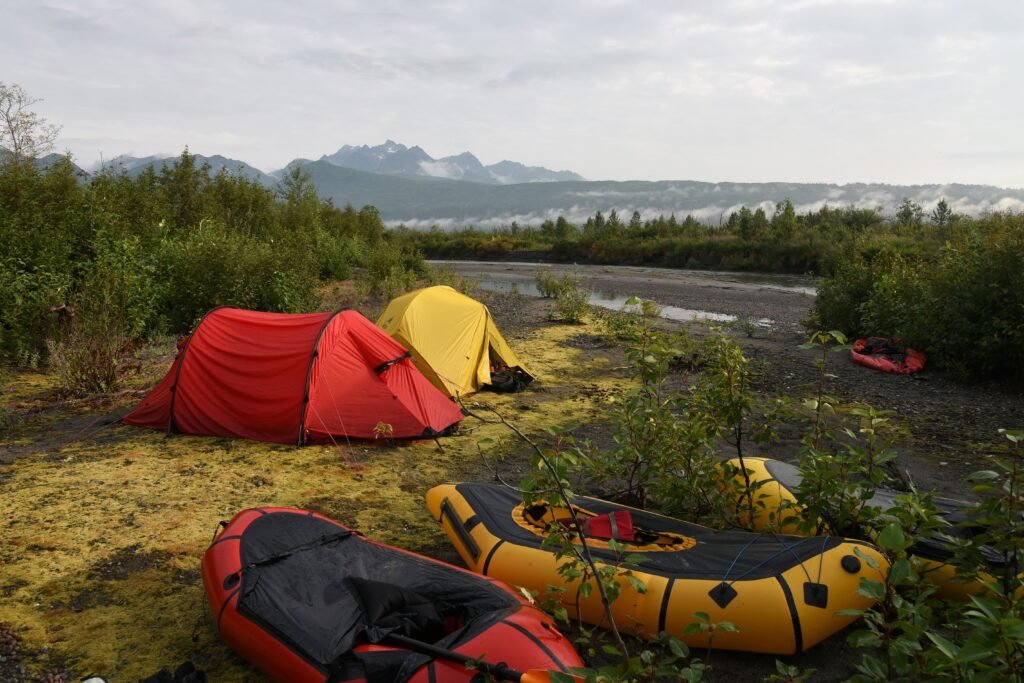
Hiking in Denali National Park means preparing for the wild. Your tent and sleeping gear are your home away from home.
- Go for a lightweight camping tent. It makes carrying your gear easier and you can move faster on trails.
- Choose a sturdy backpacking tent. The weather in Denali can be tough. A strong tent will stand up to wind and rain.
- A good sleeping bag is key. Nights get cold, so pick one that keeps you warm down to 20 degrees Fahrenheit or lower.
- Avoid the 32 – degree Fahrenheit bags. They’re not enough for Denali’s chilly nights.
- Bring a sleeping pad. It adds cushion and insulation, so you stay warmer as you sleep.
- Pack an extra blanket just in case. Extra warmth is always welcome if temperatures drop more than expected.
- Consider a waterproof bag cover. This helps keep your sleeping gear dry during rainy days or when crossing rivers.
- Your pillow matters too! Get a small travel pillow or use clothes in a stuff sack for comfort.
- Zipper repair kits can save the night. Tent zippers can break; having a kit means you can fix it fast and stay warm.
Food and Cooking
Eating right is key on any Denali adventure. You’ll need energy for the trails, and good food can make your trip even better.
- Pack smart with light but filling foods. Think about taking dehydrated meals that only need hot water to prepare.
- Always use bear – resistant containers. Denali National Park asks you to do this to keep bears away from your food.
- Bring a small, sturdy pot for cooking. On my trip, I used a Mors pot which was perfect for campsite meals.
- Don’t forget a cup or mug for warm drinks. A G.I. canteen cup worked great for me and helped me stay hydrated with lots of tea.
- Plan meals that are easy to make. After a long day of hiking, you won’t want to spend hours cooking!
- Carry a lightweight stove and fuel. It’s much safer than an open fire and works in all kinds of weather.
- Clean up right after eating. This will help keep the area safe for you and the wildlife.
Other Items
Pack smart for your Denali adventure. Besides your main gear, these are the must-haves for a safe and enjoyable trip:
- A map and compass: Even if you have a GPS device, always carry a good old-fashioned map and compass as backups.
- Water filtration system: Streams may look clean but can have tiny organisms that make you sick. Filter all your drinking water.
- Satellite communicator or Personal Locator Beacon (PLB): In an emergency, you need to call for help, especially where cell phones don’t work.
- Bear-resistant food container: Bears have great noses. Keep all your food and scented items locked away so bears can’t get them.
- Headlamp with extra batteries: Trails are dark at night. Use a headlamp to see where you’re going and keep your hands free.
- First aid kit: Cuts and blisters happen. Have bandages, antiseptic wipes, and other basics on hand.
- Sun protection: The sun can be strong. Wear sunglasses, sunscreen, and a hat to shield yourself.
- Bug repellent or bug jacket: Mosquitoes love Alaska too. Keep them off with spray or special clothing.
- Duct tape: It fixes tents, backpacks, boots – almost anything that breaks while hiking.
- Trekking poles: These help with balance on uneven ground and take stress off your knees during descents.
Safety Considerations
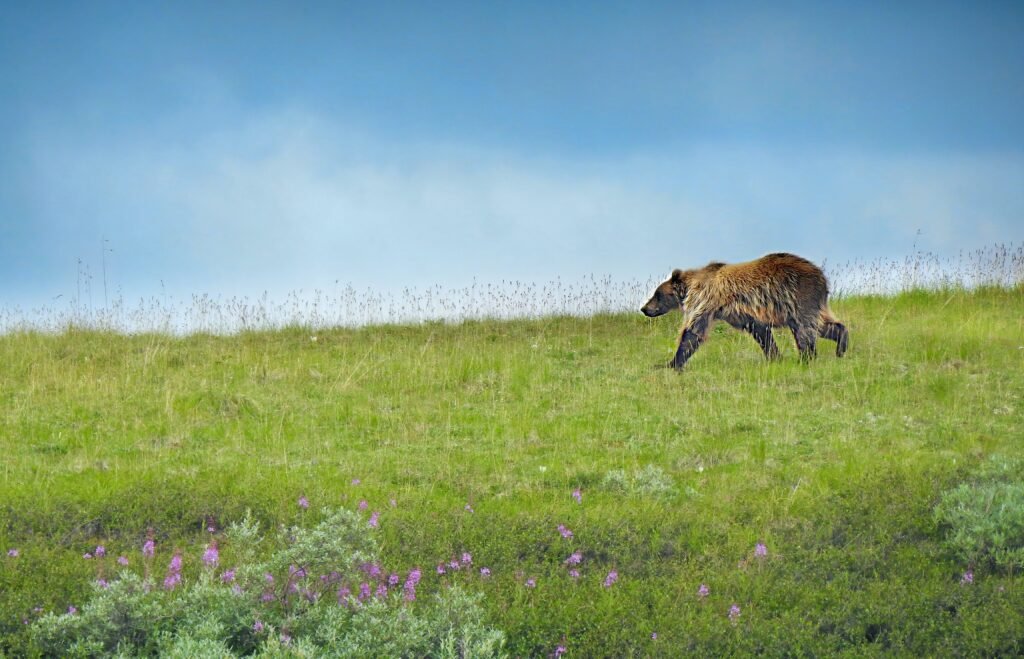
Venturing into the heart of Denali’s wilderness requires a deep respect for its natural inhabitants and environmental hazards; your well-being hinges on recognizing and skillfully managing these risks.
Prepare to delve into crucial strategies for staying safe among moose, grizzly bears, and while crossing Alaska’s unpredictable rivers – it’s knowledge that could be as vital as your backpack itself.
Dealing With Moose & Grizzly Bears
Moose and grizzly bears are a big part of Denali National Park. You need to know how to stay safe around them. Here’s what you should do:
- Keep your distance: Never get close to moose or bears. They need their space. If you see one, back away slowly.
- Make noise: Talk loudly or clap your hands when hiking. Noise lets animals know you’re coming and can prevent surprises.
- Store food safely: Use bear-resistant containers for your food. This keeps bears away from your campsite.
- Carry bear spray: Have bear spray with you and know how to use it. It can stop a bear in its tracks if it gets too close.
- Do not run: If you meet a bear, don’t run. Stand still, speak calmly, and slowly move back.
- Be big and loud: If a grizzly comes close, wave your arms and make noise to seem bigger.
- Don’t feed wildlife: Feeding moose or bears is dangerous and illegal. Always keep your food away from them.
- Watch for signs: Look for bear tracks or scat on trails. These signs tell you that bears might be nearby.
- Camp in groups: Bears and moose are less likely to come near large groups of people.
- Know the behavior: Learn about moose and bear behaviors before your trip so you understand what they might do.
How to Ford a River
Crossing a river can be tricky in Denali National Park. It’s important to know what you’re doing to stay safe.
- Look for the best spot: Find where the river is widest. This usually means it will be shallower and slower.
- Check the current: Throw a stick or leaf in to see how fast the water moves. Stay away from strong currents.
- Use a stick: Find a long, sturdy stick. Hold it in front of you for balance as you walk.
- Face upstream: Point your body towards where the water comes from. This helps you keep balance against the water’s push.
- Go slowly: Take small steps and move carefully. Make sure each foot is stable before you step again.
- Stay low: Bend your knees slightly and lean forward a little. This position makes you stronger against the flow.
- Wear shoes: Keep your footwear on for protection against rocks and sticks in the river.
- Unclip your gear: If you have a backpack with a hip belt or chest strap, unclip them. If you fall, you can get away from your bag quickly.
- Cross with friends: If there are others with you, cross together. Lock arms or hold onto each other’s packs for more stability.
- Plan your exit: Before entering, look at where you will get out on the other side. Be sure it’s easy to climb out onto land.
Bear Safety
Crossing rivers safely is just one part of your adventure in Denali. Now, let’s focus on how to stay safe around bears.
- Bear Safety:
- Carry bear spray: It’s a must-have for hikers in Denali National Park. Pick it up in Alaska since you can’t bring it on planes or trains.
- Attend orientation: The visitor center will teach you about the triangle method for setting up camp and how to handle a bear encounter.
- Use bear-resistant containers: Store all your food and scented items in these, especially during summer backpacking trips.
- Stay alert: Keep an eye out for bears and make noise as you hike to avoid surprising them.
- Know what to do if you see a bear: Stand your ground, talk calmly, and slowly back away if the bear notices you but does not approach.
- Don’t run: If a bear charges, use your bear spray and never run—bears can chase after you much faster than you think.
- Cook away from your tent: Set up the cooking area at least 100 yards from where you sleep to keep bears away from where you rest.
- Be extra cautious with fish: Bears love fish! If you’ve caught any, store them just like your food—away from sleeping areas and sealed off in bear-resistant containers.
- Group up: Hiking in groups is safer; bears are less likely to approach when there’s more noise and activity.
- Learn about non-lethal deterrents: Besides bear spray, find out about other ways to keep bears at bay without hurting them.
Practical Tips
From understanding the vagaries of Alaskan weather to mastering the park’s shuttle system, our practical tips provide essential insights that will help streamline your Denali adventure—dive in for invaluable guidance that could make all the difference.
Weather and Timing
Weather in Denali National Park can be tricky. Timing is everything for a successful trip.
- Summer is the most popular time to visit, but the weather can still be unpredictable. You might see sunny days or snow, even in July.
- Always check the forecast before you go and every day during your trip. This helps you stay safe and comfortable.
- Bring layers of clothing – a waterproof jacket, warm hat, and gloves are key. They will keep you dry and warm if the weather changes fast.
- The best months for hiking are June to September when trails are mostly clear of snow.
- Rivers swell with meltwater in early summer; by late August or early September, they’re easier to cross.
- Morning hikes can be chilly so start with extra layers that you can take off as it warms up.
- If you prefer less crowded trails, late season hiking in September offers solitude but prepare for cooler temperatures.
- Sometimes trails can close due to bad weather or bears. Have backup plans just in case.
- Darkness comes back by mid – August; bring a headlamp for those longer twilight hours.
Getting a Permit
After checking the weather, your next step is to get a permit for backpacking in Denali. Here’s how you can secure one:
- Head to the ranger station: Visit the Denali Visitor Center or the Backcountry Information Center.
- Do it in person: You must show up yourself to get a permit, up to 24 hours before your trip starts.
- Come early: Permits are first come, first serve. The earlier you arrive, the better your chances of getting one.
- Pick your park unit: Denali has 87 backcountry units. Look at maps and talk with rangers to choose where you’ll hike.
- Know that it’s free: There’s no cost for a backcountry permit, but bring ID and emergency contact info.
- Fill out forms: You’ll need to write down your planned route and party members’ details.
- Attend an orientation: Learn about safety and rules before you head into the wilderness.
The Bus System
The bus system in Denali National Park makes getting around easy and is a must for backpackers. You can catch free shuttles near the park entrance or hop on a camper bus to head deep into the wild.
Before you set off on your grand adventure, grab your backpacking permit, then buy a camper bus ticket at the Denali Bus Depot.
Riding these buses lets you dive into backcountry units without worrying about how to get there. Plus, they’re not just for getting in; use them to leave the park too once your hike is done.
A handy tip: Your bus ticket lets you ride any shuttle in the park for no extra money. This means more freedom to explore without digging deeper into your pockets!
Tips for a Successful Backpacking Experience

Embarking on a Denali adventure requires savvy preparation and an intrepid spirit. From mastering the art of navigation to absorbing tales of close encounters with the park’s majestic bears, this section arms you with pivotal insights that ensure your trek through Alaska’s wild heart is not only awe-inspiring but also exceedingly safe and rewarding.
Navigating Denali
Finding your way through Denali National Park can be thrilling. Here’s how you can explore this vast wilderness smartly and safely:
- Plan your trip by looking at maps of Denali to choose your trails or backcountry units.
- Get a backcountry permit. This is a must-have to camp in the park.
- Attend the mandatory backcountry orientation. Rangers will teach you about safety and rules.
- Use a compass and topographic map. GPS can fail, so these old tools are your best friends.
- Look for landmarks like rivers, mountains, and valleys to help you know where you are.
- Stay aware of the weather. It can change fast in Denali, so be ready.
- Learn about river crossings. They can be dangerous, so knowing how is important.
- Pack bear – resistant food containers; they’re required in the summer months to keep bears away from your food.
- Talk to rangers for advice on routes and conditions before heading out.
Bear Encounter Stories
After learning how to move through Denali’s wild, it’s good to hear about real bear encounters. Hikers have met both black bears and grizzly bears while exploring the park. Most times, campers had to act big and loud.
They needed to show the bears they should not come closer. People made a “human wall” if they were in a group, waving their arms and shouting together.
Bears might come into your path when you are hiking alone or with friends. The key is to always watch out and make noise as you walk. If a grizzly shows up, stand tall but do not run.
Stay close if you are with others and talk loudly or clap hands so the bear knows humans are there. These stories help us remember that we’re just visitors in the homes of these powerful animals.
Lessons Learned and Recommendations
Hiking in Denali is about being ready for anything. You need to pack smart and think ahead. Be sure to have gear that can handle cold, rain, and tough terrain. Clothes should be warm and water resistant, boots must be strong yet comfy, and always have a map.
Your camping gear needs to be just as tough. Pick a tent that can stand up to wind and snow. A sleeping bag should keep you cozy when it gets real cold at night. And remember the rule: Take out what you bring in so the park stays clean for everyone after you! Now let’s talk about staying safe with wild animals around..
Conclusion
Hiking in Denali National Park is an adventure like no other. You’ve learned about the park’s vast wilderness and how to get ready for your trip. Remember, getting a permit is key – do this one day before you start.
Bring the right gear so you stay safe and comfortable on the trail. Don’t forget, dealing with wildlife and rivers requires special care – always be aware of your surroundings and prepared for emergencies.
If you plan well and respect nature, this journey can be unforgettable. Embrace the wild beauty of Denali on your backpacking trip, it’s waiting for you!
